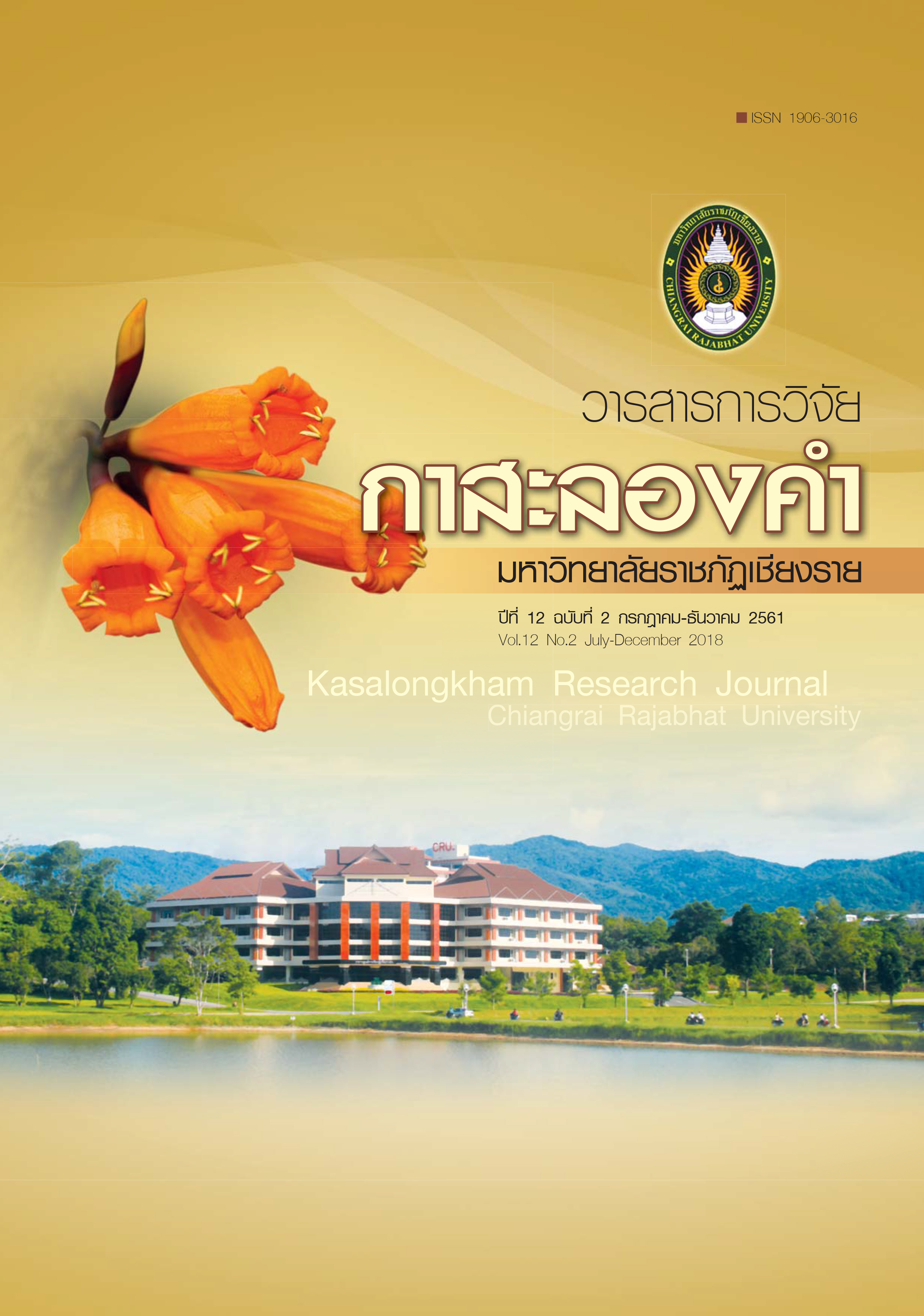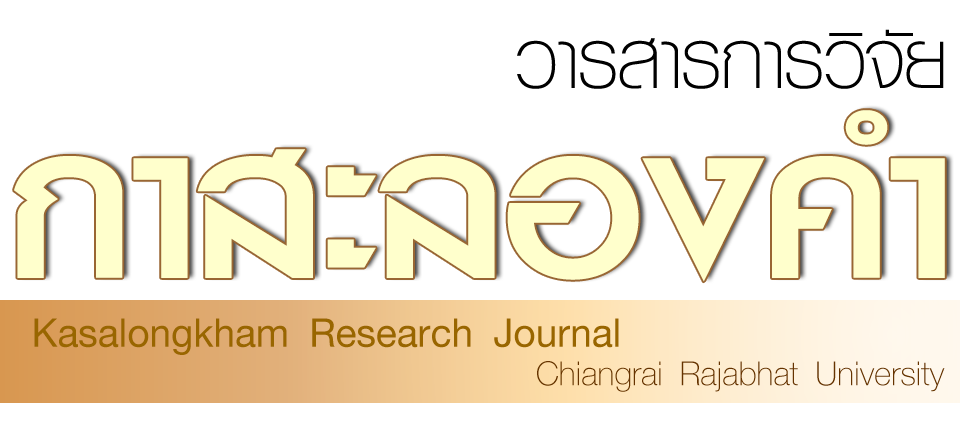การขับเคลื่อนเครือข่ายทางสังคมในการสร้างการรับรู้และการเข้าถึงสิทธิประโยชน์ ของผู้สูงอายุที่ยากจน ในชุมชนเมืองจังหวัดเชียงราย
คำสำคัญ:
เครือข่ายทางสังคม, สิทธิประโยชน์, ผู้สูงอายุที่ยากจนบทคัดย่อ
The aims of this study were to examine the circumstance, perception problems, and benefits accessibility of the poor elderly in urban communities of Chiang Rai Province, to investigate the factors involving social networks in creating perception and benefits accessibility for the poor elderly in urban communities of Chiang Rai Province, and to create and mobilize the social networks in building perception and benefits accessibility for the poor elderly in urban communities of Chiang Rai Province. The samples were 380 elderly who held income lower than the poverty line, and 32 participants who were official and unofficial community leaders in the urban communities, representatives from government and private organizations whose jobs involving with the elderly, scholars in community development, mass community and elderly studies. The research instruments were interview, focus-group discussion, SWOT analysis, and AIC (Appreciation – Influence – Control). The results showed that: 1. The problems on perception and benefits accessibility for the poor elderly in urban communities in Chiang Rai Province, in overall, were found at the moderate level. The individual aspects analysis revealed that the aspect holding the highest problem mean scores were the use of tools or equipment for accessing information about the benefits, followed by lacking knowledge on channels for accessing the benefits, and lacking knowledge on how to access or who to contact for the information about their rights and benefits. 2. The factors concerning the building of social networks for awareness and accessibility of benefits of poor elderly in urban communities of Chiang Rai Province refers to a social network in the form of a group of people who hold the relationship and connection among the members as friends, relatives or colleagues. Their relationship and connection can be observed from direct communication through online platforms such as e-mail or social media for the purpose of information sharing, idea exchange, or advice on using the shared resources. The social network perhaps involve members of the whole community or people from outside the community, organization, institution or people connected through the web pages. Therefore, mobilizing the social network must take into account the involved factors in order for efficient operation. Or, these factors can serve as the issues used for mobilizing the social network i.e. status acceptance of the elderly and their family, information exposure and accessibility means for the poor elderly, government policy and regulations, internal community communication system, community activities and participation of people in the community, volunteering-minded of people in the community, roles and leadership of the community. 3. The mobilization of social networks in building perception and benefits accessibility for the poor elderly in urban communities of Chiang Rai Province were proposes as follows. 3.1 Setup the committee to work for the poor elderly which consists of the committee members who come from the representatives of the elderly, community leaders, volunteers, and health promotion volunteers. 3.2 The committee members and community committee members work on developing the plan to work together. 3.3 Setup the community to assemble the community members to work together on the activities. 3.4 Organize the career development activities for the community members. 3.5 Support the setup of coffee talk group in the community to serve as the space for knowledge exchange among the community members. 3.6 Co-develop the system to provide the care for the poor elderly. 3.7 Survey the poor elderly target group and categorize and prioritize types of problems among the poor elderly according the setup criteria. 3.8 Communicate with the poor elderly and or their family using various communication means. 3.9 Build or develop the community leaders, volunteers, health promotion volunteers to educate the rights and benefits for the elderly. 3.10 Build knowledge and understanding about the rights and benefits of the elderly to their family of caregiver.
เอกสารอ้างอิง
มหาวิทยาลัยมหิดล. (2556). การบูรณาการ (Integration). สืบค้นจาก https://www1.si.mahidol.ac.th/km/node/2287.
มูลนิธิพัฒนางานผู้สูงอายุ. (2560). สถานการณ์ผู้สูงอายุในประเทศไทย (ด้านประชากร). สืบค้นจาก https://fopdev.or.th.
สำนักงานสาธารณสุขจังหวัดเชียงราย. (2557). สัดส่วนประชากรในจังหวัดเชียงราย. เชียงราย: สำนักงานสาธารณสุขจังหวัดเชียงราย.
สุพัฒน์ กาฬพันธ์. (2555). องค์ความรู้ในการสร้างเครือข่ายเพื่อพัฒนางานด้านวัฒนธรรม สำนักงานวัฒนธรรมจังหวัดหนองบัวลำภู จังหวัดหนองบัวลำภู. หนองบัวลำภู: สำนักงานวัฒนธรรมจังหวัดหนองบัวลำภู.






